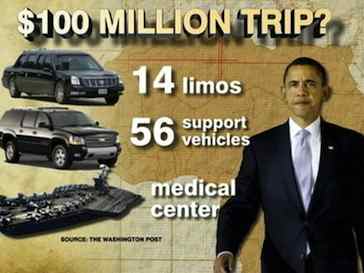
The main motive in providing the aid is the growth of Chinese activity on the African continent. China is buying up arable land to feed its own people, and building roads, running farms, and building entire cities as a by-product. As it spends more, China’s influence grows in the region.
So now the USA is playing catchup, and Obama’s speeches suggest US aid will focus in on the continent’s energy shortage. This is not entirely a good thing.
The focus on clean energy is appropriate in some cases: “In places, when people are far from the power grid and it makes more sense to invest in off-grid renewables, absolutely,” said one Presidential advisor. The International Energy Agency, for instance, has found that renewable power could be the most cost-effective option for expanding energy access in about 70 percent of rural areas in developing countries.
But what counts as “electricity access”? Access to electricity means different things to different people — and there’s no clear definition. In some parts of Africa, it might mean enough for two light bulbs and charging a cell phone. Meanwhile in the West, enough is never enough.
Roger Pielke Jr., an environmental studies professor at the University of Colorado, has pointed out that the international community’s definition of “modern energy access” tends to be quite scant — it means providing people with a mere 2.2 percent of the energy that the average American uses. Hart says that how “access” gets defined is something he’ll be watching very closely in U.S. plans to promote electricity in Africa.
How much money would it take to make sure everyone had access to electricity? The answer is a lot according to the Washington Post.
Right now, 1.2 billion people around the world are off the grid — with about 550 million of those in Africa.
A recent report from the World Bank and International Energy Agency found that it would take a truly enormous push to close that gap by 2030. That’s because current rates of electrification are actually slower than population growth. “With regard to universal access,” the report notes, “business as usual would leave 12 percent of the world’s population in 2030 without electricity.”
The report estimated that it would likely take between $120 billion and $160 billion per year over and above existing levels to bring energy access to everyone by 2030. (And, again, that’s a relatively spartan definition of “energy access.”) That would include both tax dollar subsidies and private investment. It would also likely mean changing all sorts of regulations and institutions in poorer countries. Money certainly isn’t the only obstacle. So Obama’s announcement — $7 billion, plus at least $9 billion in private-sector financing — is a small step.
But the race with China for influence in African capitals mean that number is certain to go up, and energy consumption is certain to skyrocket, which might be good for growth, but will be very bad for the environment in a continent which already suffers from harsh weather.
As for Africa itself, the journal Utilities Policy estimated that Africa would need a tenfold increase in installed capacity to bring everyone power by 2030. To get all of sub-Saharan Africa up to South African levels, for instance, would require 330 gigawatts of new capacity. For context, the new White House plan would bring about 10 gigawatts.
While we bring power to Africa, had we better be reducing our own consumption at home?
